{I was invited on a hosted trip with the California Farm Water Coalition which facilitated the writing of this post}
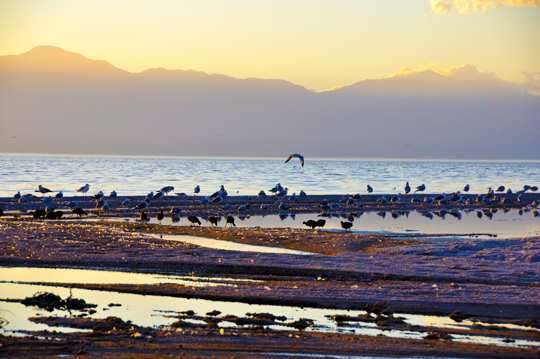
It was late afternoon and the sun was just beginning to set over the Salton Sea. At nearly 35 miles long and 15 miles wide (spanning 376 square miles), it isn’t difficult to miss if you’re traveling within the Imperial or Coachella Valleys of Southern California. Its beauty though, is an enigma, and anyone driving within the vicinity senses this based solely on the smell of sulfur that often greets visitors upon arrival.

Our visit to the Salton Sea was more than just a photo opp. This body of water was formed in the early 1900s when the Colorado River overwhelmed the diversion canals and flooded this river bed for 18 months, thus forming the Salton Sea. The smell that begrudgingly alerts you to its existence is the result of farm water run-off which contains salts, fertilizers, pesticides and other chemicals that would otherwise make the soil that is so vital for our food supply unusable. The Imperial Irrigation District supplies water to San Diego County to alleviate some of their drought and is also responsible for replenishing that water to avoid potentially toxic chemicals from polluting the air quality in this area. A growing environmental problem, it’s just one of the fascinating things I learned during my weekend with the California Farm Water Coalition.
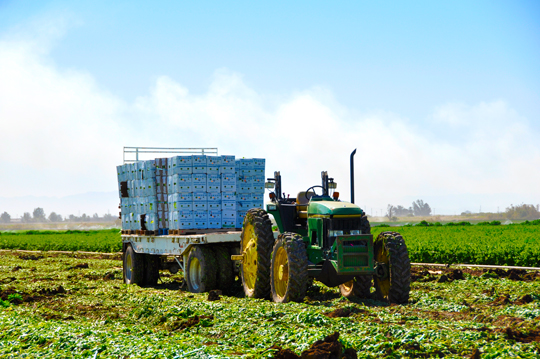
My weekend with the CFWC was inspired by my interest in knowing where our food comes from and how it is grown. I’ve traversed many a farm, but the focus of this particular trip differed in that it focused on a resource so vital, that without it we would have no food. Even if you don’t live in California, you’re likely aware of the drought we’ve been experiencing. While not technically a desert, it isn’t uncommon for our region to experience low levels of rainfall. For most residents, their concern involves water usage at the faucet. Because California is home to 78,000 farms which grow 400 different crops, we supply more than 50% of America’s fruits, nuts and vegetables, hence the severity and potential impact of the current drought. Of the 400 crops supplied by our state, 14 of them can only be grown right here!

While farmers do use 40% of the water here in California, the benefits extend far beyond the state, and Americans in general spend less on food than populations across the globe. In order to understand how farmers are using water responsibly to grow food safely, we began our trip with a visit to Lakeside Organic Gardens.
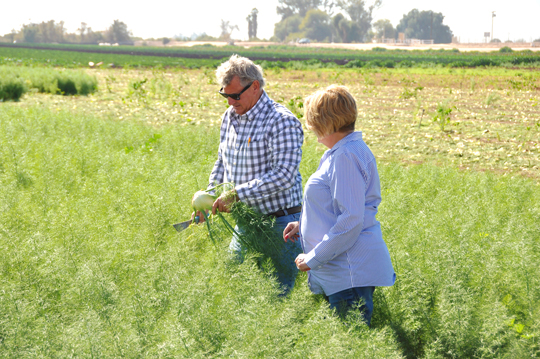
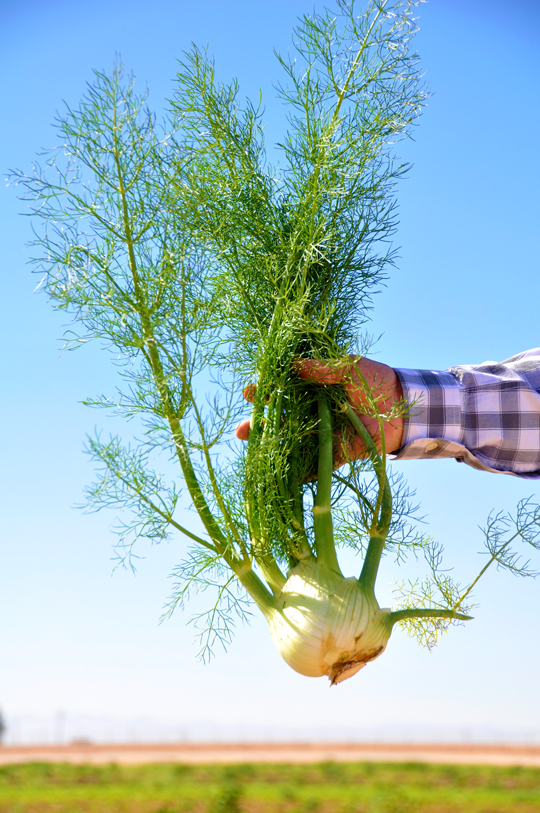
As the largest family-owned, organic vegetable grower and shipper in the US, these farms produce 47 vegetables throughout the year. As Farmer Scott Howington explained, California is the largest producer of agricultural product in the nation, and arguably, the world. When I think of where our food comes from, the Imperial Valley doesn’t readily come to mind. As I soon learned, the Imperial Valley ranks #11 as far as production, owing to its idyllic soil and climate and proximity to the Colorado River. And because of these nearly perfect growing conditions, crops can grow year round, which means I can enjoy cantaloupe, traditionally a summer fruit, in the middle of November! However, none of the beautiful produce you see grown here is achievable without a regular supply of water.
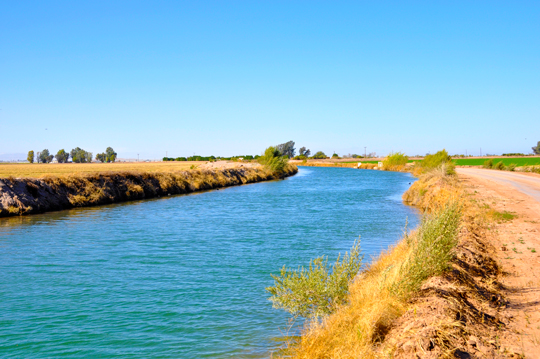
With its close proximity to the Colorado River, it is a vital resource for farmers in this region. Farmers like Howington order the water they need to grow their crops in advance, and it is delivered to them via the All-American Canal. This 80-mile long aqueduct brings water into the Imperial Valley via smaller canals that branch off of it. Agricultural runoff from the All-American Canal drains into the Salton Sea, thus closing the loop.
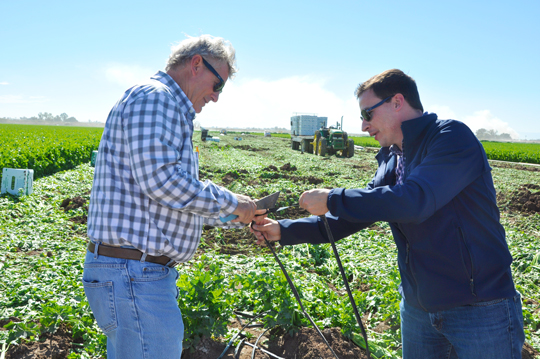
Drip Irrigation Used at Lakeside Organic Gardens
Farmers have a legal right to water, and like residents of the state, they pay for the delivery of that water as opposed to the water itself. Once it is taken from the source to the farm, the grower is responsible for using this water in a way that is efficient and effective, and laws exist to ensure reasonable, acceptable and beneficial use of this water.
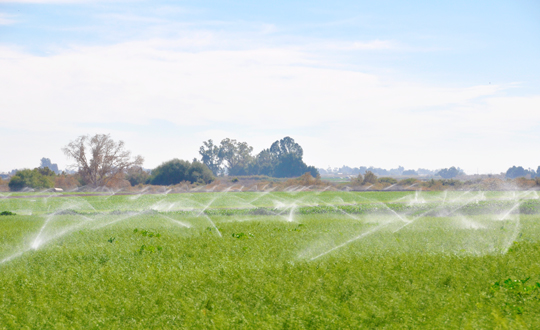
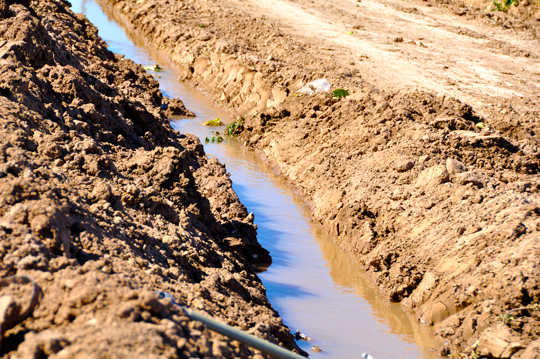
A common agricultural misconception is that the growing of crops requires exceptional amounts of water, thus contributing to environmental concerns regarding our drought. Innovation in field irrigation means that less water is required to grow certain crops. Farmers employ 3 different types of irrigation depending on the crop they are growing, and part of their expertise is knowing which to use in order to ensure successful and responsible growing. More important than how much water a crop needs is ensuring that crop receives the right amount of water at the right time.
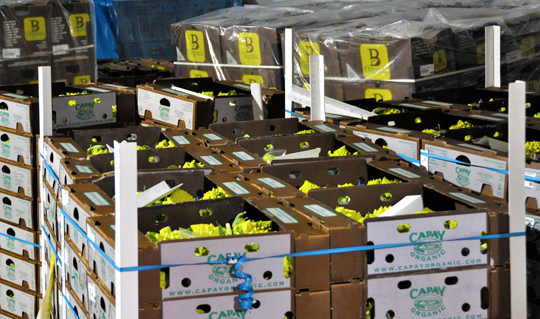
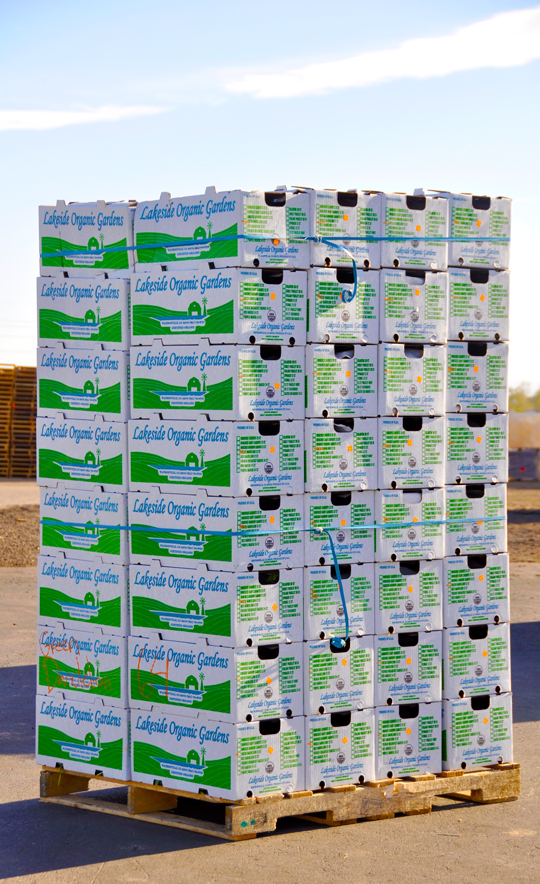
Once these crops are grown and harvested, they still need to be transported safely and efficiently in order for us to enjoy them. Our first day with the California Farm Water Coalition concluded at Veg Cool where crops are cooled, packed, and then shipped to stores for public purchase. The total turnaround time can be 24 hours, which means the produce you see at your grocery store is as fresh as possible, often only a day or two from being harvested off of the farm.
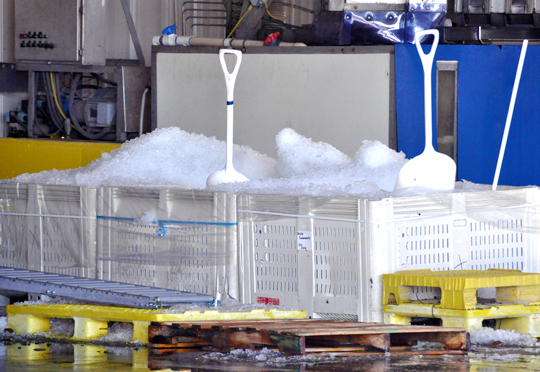
In this particular shipping and distribution center, both conventional and organic produce are cooled, packaged, and shipped, which means the systems are separated. At Veg Cool, three types of cooling systems are used depending on the produce. All produce is initially cooled via the hydro cooler and then further chilled either via ice injector for more robust vegetables (i.e. radish, broccoli) or hand-iced for delicate vegetables (i.e. leafy greens, cilantro). The ice and water used during this process is also regulated and tested every 30 days for safety, continuing the cycle of responsible water usage.


They say that farmers are the biggest gamblers in the world, and a glimpse into the process of growing crops shed light on just how complex this industry is. Crops are delicate and require sublime conditions in order to grow into the fruits and vegetables you see at your local grocery store. From seed to supermarket, I’ve come to understand how vital a regular, safe supply of water is for farmers.
The California Farm Water Coalition is a non-profit organization that provides information regarding farming and water usage to ensure accuracy, and I encourage you to visit their website to learn more about how farmers are using water responsibly to ensure consistent, safe growing and supply of food for our country.
- Discover Luxury at Sonesta Irvine: Your Ideal Staycation - August 8, 2024
- CHOC Walk Returns to the Disneyland Resort – Special Events and Ways to Support - June 28, 2023
- Beastly Ball Returns to the Los Angeles Zoo - May 8, 2023

Leave a Reply